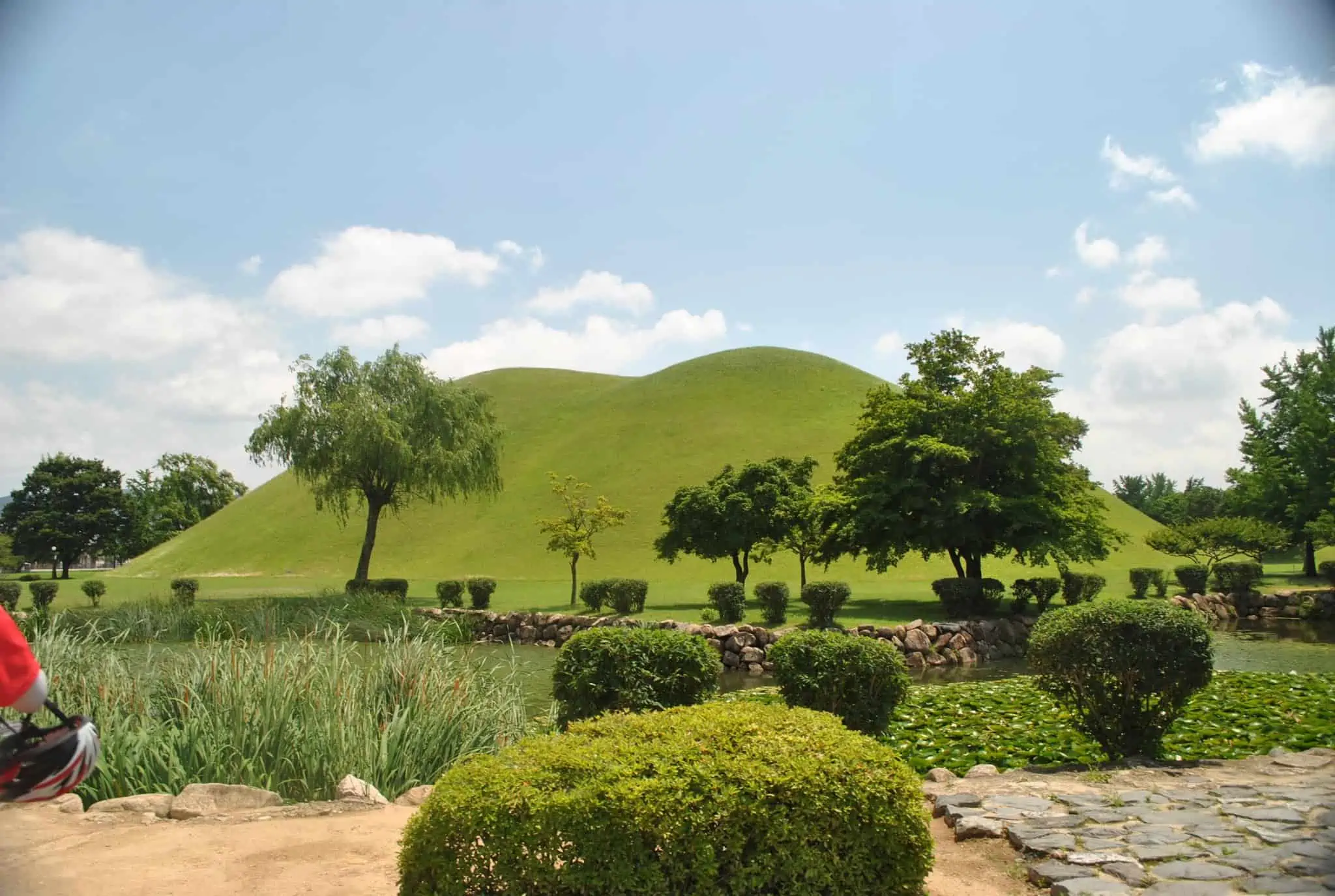Tour guide, transportation, breakfast (1time), hotel (1night / 2 people sharing) and entrance fees included
Itinerary
Day1 : Hotel (Seoul) → Gyeongju National Museum → Anapji Pond → Cheomseongdae Observatory → Tumuli Park → Overnight (Hotel)
Day2 : Hotel Breakfast → Seokguram Grotto → Bulguksa Temple → Folk Craft Museum → Hotel (Seoul)
Description
Gyeongju was the capital city of the ancient kingdom of Silla. The city is often referred to as a “museum without walls” because of the many cultural relics scattered throughout the city. Almost everything in this city, from the streets to the mountains, is rich in history. Gyeongju has roughly 300 sites that have been designated as a cultural heritage, with some of them being UNESCO-recognized World Heritage Sites.
The Gyeongju Special Tourist Zone includes the districts of Namsan, Wolseong, Daereungwon, Hwangryongsa and Sanseong. This area has a total of 52 cultural assets registered on the World Heritage list. Many of the hills are actually royal tombs and fields of grass used to be sites of ancient temples.
The entire Namsan Mountain can almost be considered a cultural asset because of the many stone pagodas and Buddha statues that can be found here. The Bulguk district is home to many of Gyeongju’s most well-known attractions such as Bulguksa Temple, Seokguram Grotto, Gyeongju Folk Village, Silla Arts and Science Museum, and Goereung.
In the Bomun district, there are plenty of recreation facilities surrounding Bomunho Lake. Other attractions in the area include Gyeongju World Culture Expo Park, Gyeongju World and Silla Millennium Park.
Tour Course Information
Gyeongju National Museum
Gyeongju National Museum rests deep in tradition, with a history of about 90 years. Representing Gyeongju, which used to be the capital of Silla (BC57~AD935), the museum is where you can view the cultural history of Gyeongju district. The exhibition hall is divided into 4 large parts: the Main hall, Annex I, Annex II, and the Outdoor Exhibit Area (Museum Grounds). In the Main Hall you can see earthenware, and in the Arts and Crafts room you can see various artwork and craftwork.
Bulguksa Temple
Bulguksa Temple is the representative relic of Gyeongju and was designated as a World Cultural Asset by UNESCO in 1995. The beauty of the temple itself and the artistic touch of the stone relics are known throughout the world. Bulguksa Temple was built in 528 during the Shilla Dynasty, in the 15th year of King Beop-Heung’s reign (514~540). It was called Hwaeom Bulguksa Temple or Beopryusa Temple back then. In 751, under King Gyeong-Deok (reign 742∼765), Kim Dae-Seong (700~774) started rebuilding the temple and finished in 774, under King Hye-Gong (reign 765~780). After 17 years of construction, the name ‘Bulguksa’ was finally given to the temple.
Seokguram Grotto
Seokguram, located on Mt.Tohamsan, is the representative stone temple of Korea. The official name of Seokguram, National Treasure No. 24, is Seokguram Seokgul. Designated as World Cultural Heritage Site by UNESCO in 1995, it is an artificial stone temple made of granite. The construction started with Kim Dae-Seong (700~774) in 751 during the reign of King Gyeong-Deok (742~765) of the Silla Dynasty (57 B.C.~A.D. 935) and it was finished twenty-four years later in 774, during the reign of King Hye-Gong (765~780). Seokguram is known to have been built with Bulguksa Temple.
Anapji Pond
As said in the historical book of Samguk-sagi, during the 14th year of King Munmu’s reign (AD 661~681) in the Silla period (57 BC ~ AD 935), a large pond was dug and small mountains were built all within the palace walls. Additionally, beautiful flowers were planted and rare animals were brought in to create an exquisite garden environment. It is at Wolseung (fortress erected in AD 101 during the Silla period) that we can find Anapji Pond. In 1974, an excavation revealed large spherical shapes (measuring 200 meters in diameter and 180 meters in height) indicating that 3 islands were located in the pond. Anapji Pond can presently be viewed in its near original splendor, thanks to restoration efforts.
Tumuli Park
Large ancient tombs of kings and noblemen of the Silla Dynasty can be seen around Gyeongju at the Daereung-won Tumuli Park. There are twenty-three large tombs located here; the most famous being Cheonmachong and Hwangnamdaechong. In an excavation of the area in the 1970’s, Cheonmachong was discovered with a painting of mounted horse. This painting is the only discovered painting from the Silla Era. You can also view the inside of Cheonmachong. There are 11,526 remains and crowns of the king inside the tomb demonstrating the lavish lifestyle of the king. Another tourist attraction is Hwangnamdaechong, which is the largest ancient tomb. It houses the bodies of both the king and queen and has over 30 thousand relics and gold accessories. The unique thing about Hwangnamdaechong is that the queen’s tomb has more luxurious accessories. From that researchers have concluded that even the queen can have a high social position before marriage. You can feel the ancient culture of Korea 1,500 years ago when visiting these tombs.
Cheomseongdae Observatory
Cheomseongdae is the oldest existing astronomical observatory in Asia. Constructed during the reign of Queen Seon-deok (632-647), it was used for observing the stars in order to forecast the weather. This stone structure is a beautiful combination of straight lines and curves, and was designated as National Treasure No.31 on December 20th, 1962.
Show only reviews in English (0)

Reviews
There are no reviews yet.